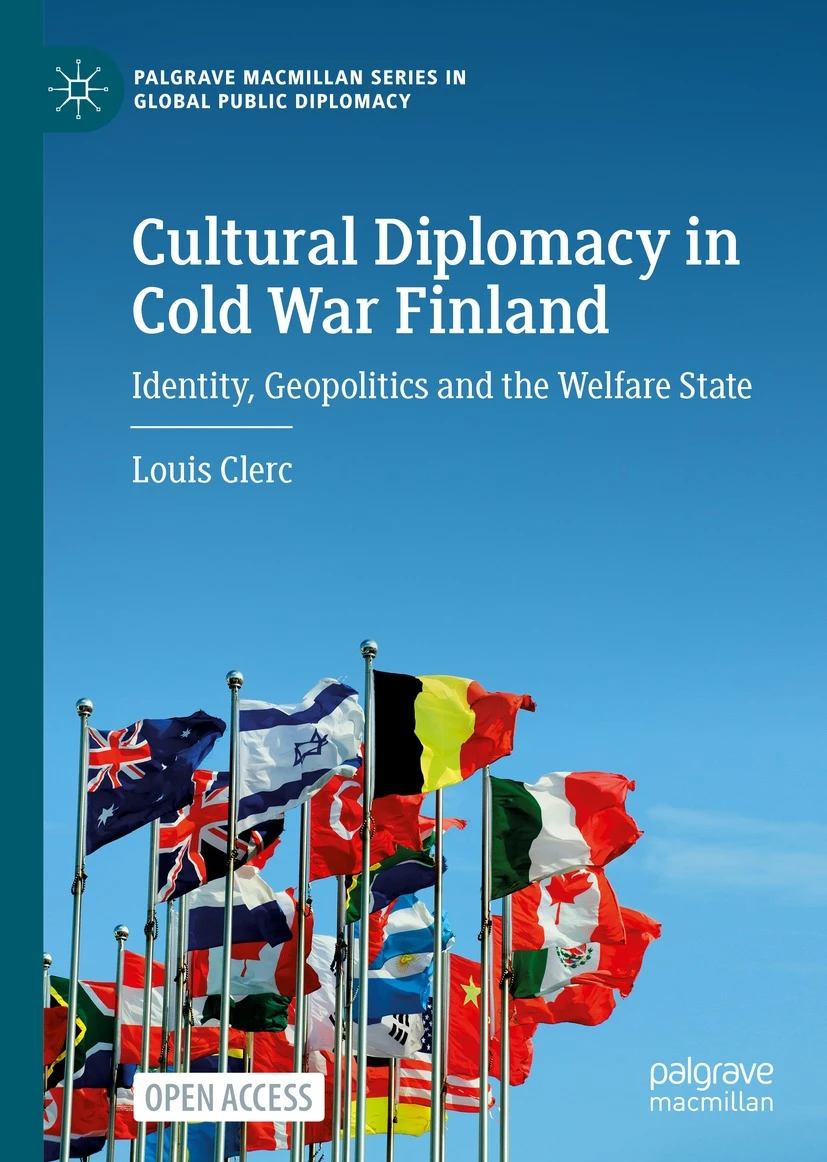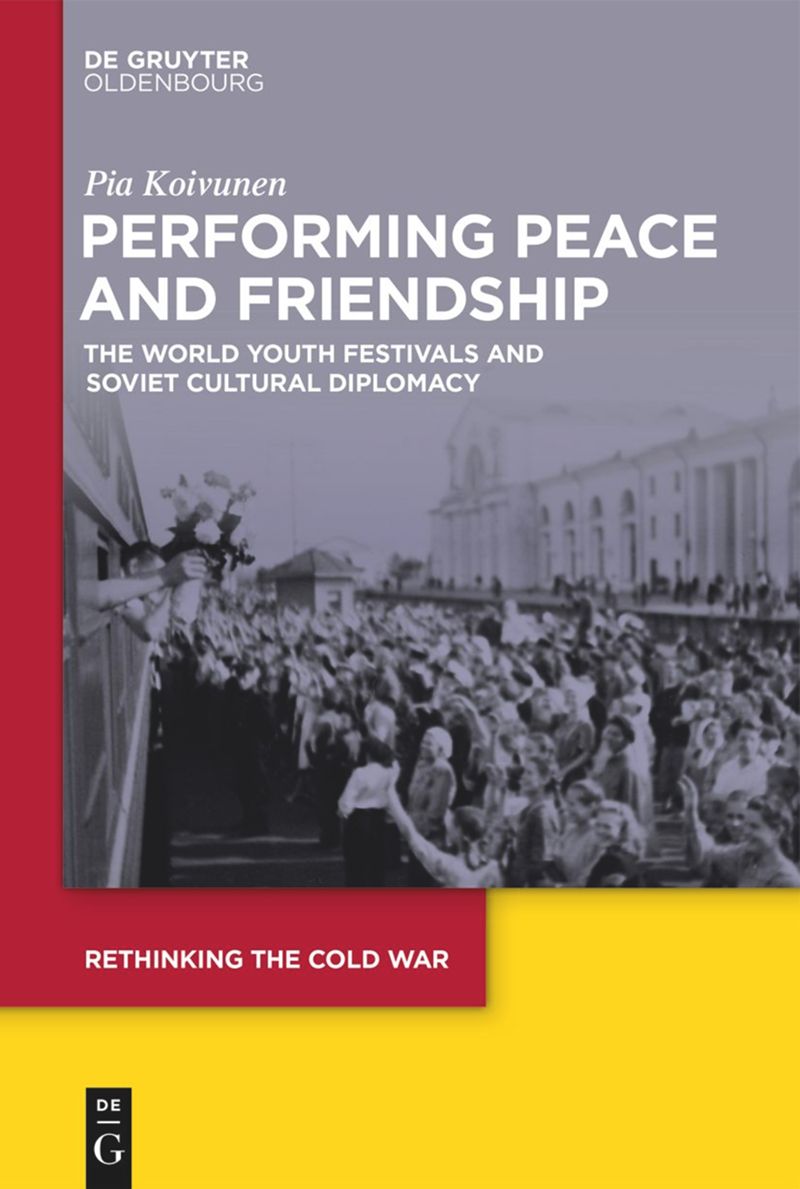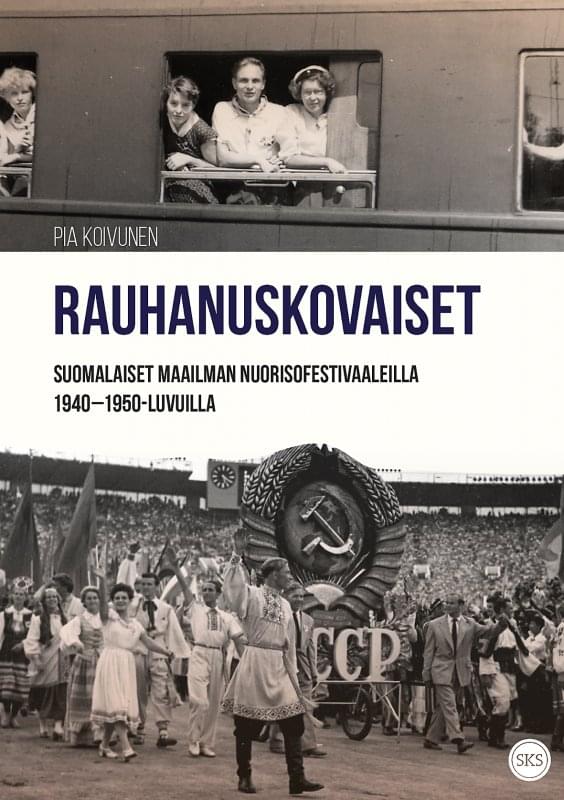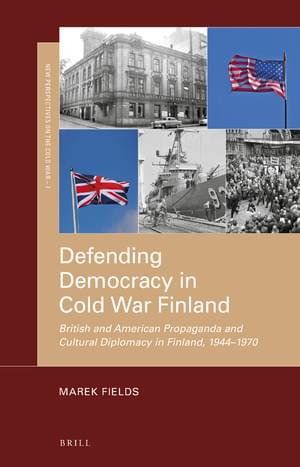
Louis Clerc
Cultural Diplomacy in Cold War Finland. Identity, Geopolitics and the Welfare State
Palgrave Macmillan, 2023
This open access book explores the organization and evolution of Finland’s Cold War cultural diplomacy (1945-1975) as the basis for a reflection on the country’s foreign relations, the link between culture and politics, small states’ autonomy during the Cold War, and the porosity of the East-West divide. The book offers a historical survey of the development of Finland’s cultural diplomacy as part of the Finnish state’s foreign activities. In its empirical parts, it focuses on archives drawn from the Finnish Ministry of Foreign Affairs and the Ministry of Education in order to explain Finland’s cultural diplomacy as the result of the country’s foreign policy orientations, interactions between domestic and foreign policy, and the expansion of state activities in the artistic, educational, and cultural sectors. Various reflections and reports on foreign cultural relations highlight the role of identity concerns, cultural relations, geopolitics and economic imperatives in the development of a specifically Finnish cultural diplomacy. Furthermore, the book focuses on specific aspects and events, considering for instance the organization and evolutions of Finland’s cultural relations with the USSR, the role of cultural treaties, academic exchanges and scientific cooperation, “cultural exports” and the marketization of culture, overlaps between cultural relations and high politics.

Pia Koivunen
Performing Peace and Friendship. The World Youth Festivals and Soviet Cultural Diplomacy
De Gruyter, 2022
Performing Peace and Friendship tells the story of how the Soviet Union succeeded in utilizing the World Festival of Youth and Students in its cultural diplomacy from late Stalinism through the early Khrushchev period. Pia Koivunen discusses the evolution of the youth gathering into a Soviet cultural product starting from the first festival held in Prague in 1947 and ending with the Moscow 1957 gathering, the latter becoming one of the most frequently referred moments of Khrushchev’s Thaw. By combining both institutional and grass-roots’ perspectives, the book widens our understanding of what Soviet cultural diplomacy was in practice, re-evaluates the agency of young people and provides new insights into the Soviet role in the cultural Cold War. Koivunen argues that rather than simply being orchestrated rallies by the Kremlin bureaucrats, the World Youth Festivals also became significant spaces of transnational encounters for young people, who found ways to employ the event for overcoming the various restrictions and boundaries of the Cold War world.

Pia Koivunen
Rauhanuskovaiset — Suomalaiset maailman nuorisofestivaaleilla 1940–1950-luvuilla [Peace Believers – Finns at the World Youth Festivals in the 1940s and 1950s]
SKS, 2020
Kylmän sodan varhaisina vuosina suomalaiset työläisnuoret matkustivat maailman nuorisofestivaaleille sosialistiseen Itä-Eurooppaan. Nuorille matkat olivat voimaannuttavia kokemuksia: kansojen, kielten ja kulttuurien kirjon kohtaaminen avarsi maailmankuvaa ja vahvisti ideologista yhteenkuuluvuudentunnetta.
Rauhanuskovaiset on kokemushistoriallinen tutkimus kansainvälisestä vuorovaikutuksesta kylmän sodan aikana. Se selvittää, keitä nuorisofestivaaleille matkanneet suomalaiset olivat, mikä heitä innosti mukaan ja kuinka he festivaalimatkat kokivat. Teos perustuu nuorisofestivaaleille osallistuneiden haastatteluihin, päiväkirjoihin ja muistelmiin sekä arkistoaineistoon.

Marek Fields
Defending Finnish Democracy – British and American Propaganda and Cultural Diplomacy in Finland, 1944–1970
Brill Publishers, 2019
In Defending Democracy in Cold War Finland, Marek Fields offers a thorough account on the various informational and cultural strategies Britain and the United States used during the early Cold War decades in order to increase their influence and contain communism in Finland.
The book shows that by using propaganda and cultural diplomacy in an exceptionally challenging environment, the two Western powers were able to achieve their main objectives in the region, i.e. to defend democracy and strengthen Finland’s attachment to the West, surprisingly well. Making use of a large variety of British, American and Finnish archives, Fields proves that the Western countries’ interest in Finland during the Cold War was stronger than it has previously been realised.

Maija Koskinen
Taiteellisesti elvyttävää ja poliittisesti ajankohtaista – Helsingin Taidehallinnäyttelyt 1928–1968 [Artistically Regenerating and Politically Topical – Exhibitions of Kunsthalle Helsinki 1928–1968]
Helsingin yliopisto, väitöskirja, 2018
The thesis deals with the impact of Kunsthalle Helsinki on the devel¬opment of Finnish visual art and on the art field during the years 1928–1968. The research builds an overall picture of Kunsthalle Helsinki as a Finnish application of the continental Kunsthalle tradition, defines its exhibition profile and opens up a relationship between its exhibitions and state politics.
The exhibitons of Kunsthalle are approached from two different perspectives dealing with exercise of power. The first one focuses on the relationship between the exhibitions of Kunsthalle, art and the art field and examines Kunsthalle as a definer of art in the inner battles of the art field. The other one opens up the relationship of the exhibitions of Kunsthalle and the art field to the exercise of political power. It highlights the connections between art, power and politics which are examined as “state political exhibitions” and as instruments of politics.
The research highlights the political dimension of the art field. Kunsthalle acted as a stage for both Finnish foreign policy and power politics. Its exhibitions reflected politics and its changes. The research demonstrates that the cherished idea of art and field as a non-political area is an illusion.

Simo Mikkonen
“Te olette valloittaneet meidät”. Taide Suomen ja Neuvostoliiton suhteissa 1944–1960 [“You have Conquered Us”. Art in Finnish-Soviet Relations 1944–1960]
SKS, 2019
Mikä oli taiteiden merkitys Suomen ja Neuvostoliiton suhteissa?
Toisen maailmansodan jälkeen kulttuuri nousi keskeiseksi osaksi Neuvostoliiton ulkopoliittista toimintaa ja kulttuuridiplomatialla oli tärkeä rooli myös Suomen neuvostosuhteissa. ”Te olette valloittaneet meidät!” tuo uutta tietoa taiteiden merkityksestä Suomen ja Neuvostoliiton suhteissa. Teos tutkii niin Suomi-Neuvostoliitto-Seuran kuin Kansallisoopperan tapaisten kulttuuri-instituutioiden roolia molemmin puolin rajaa.
Taiteenaloista kirja käsittelee erityisesti taidemusiikkia ja tanssia, joihin kulttuurivaihto alkuvuosikymmeninä painottui. Teos sivuaa myös teatteria, kuvataidetta, kirjallisuutta ja populaarimusiikkia. Esille nousee myös useiden yksittäisten taiteilijoiden, kuten Georg Otsin, rooli kulttuurivaihdoissa.
Simo Mikkonen on yliopistotutkija ja Itä-Euroopan historian dosentti. Hänen erikoisalaansa on Neuvostoliiton kulttuuridiplomaattinen toiminta sekä taidesuhteet länsimaiden ja Neuvostoliiton välillä.
Other works by project members & collaborators :
CLERC, LOUIS (2017) ”Global Trends in Local Contexts: The Finnish Embassy in Paris, 1956–1990”. New Global Studies, Vol. 11, No. 2, 101–115. DOI: 10.1515/ngs-2017-0017
CLERC, LOUIS & VALASKIVI, KATJA (2018) ”Propaganda rebranded? Finland’s international communication from the Kantine committee to the Mission for Finland report”. International Journal of Cultural Policy, Vol. 24, No. 6, 773-785, DOI: 10.1080/10286632.2018.1533004.
ELO, KIMMO (2020) ”Utilizing historical network analysis on meta-data to model East German foreign intelligence cycle in the Baltic Sea Region 1975–89”. In The Power of Networks. Prospects of Historical Network Research, Florian Kerschbaumer, Linda von Keyserlingk-Rehbein, Martin Stark, Marten Düring (eds). Routledge.
KOIVUNEN, PIA (2016) ”Friends, ’Potential Friends’, and Enemies: Reimagining Soviet Relations to the first, second and third world at the Moscow youth festival”. In Socialist Internationalism in the Cold War. Exploring the Second World. Patryk Babiracki & Austin Jersild (eds). Palgrave Macmillan.
NAGORNAYA, OKSANA et al. (2018) Sovetskaia kul’turnaia diplomatiia v usloviiakh holodnoi voiny. Rosspen.
MAGNÚSDÓTTIR, RÓSA (2019) Enemy Number One. The United States of America in Soviet ideology and propaganda, 1945–1959. Oxford University Press.
MIKKONEN, SIMO & SUUTARI PEKKA (eds) (2016) Music, Art and Diplomacy. East-West Cultural Interactions and the Cold War. Routledge.
MIKKONEN, SIMO & KOIVUNEN, PIA (eds.) (2015) Beyond the Divide. Entangled Histories of Cold War Europe. Berghahn Books.
SCOTT-SMITH, GILES; MIKKONEN SIMO & PARKKINEN, JARI (eds) (2018) Entangled East and West: Cultural Diplomacy and Artistic Interaction During the Cold War. De Gruyter.






